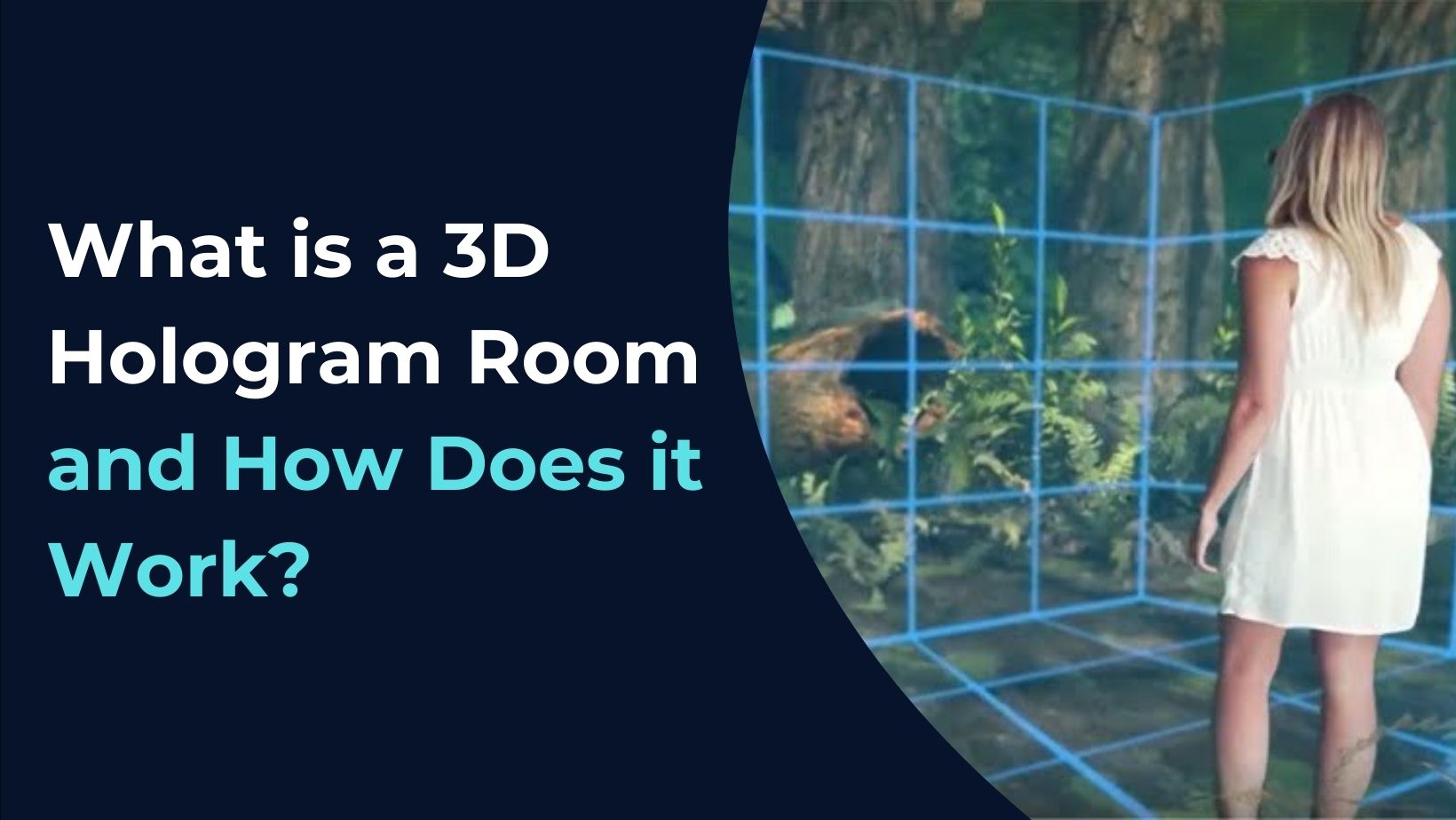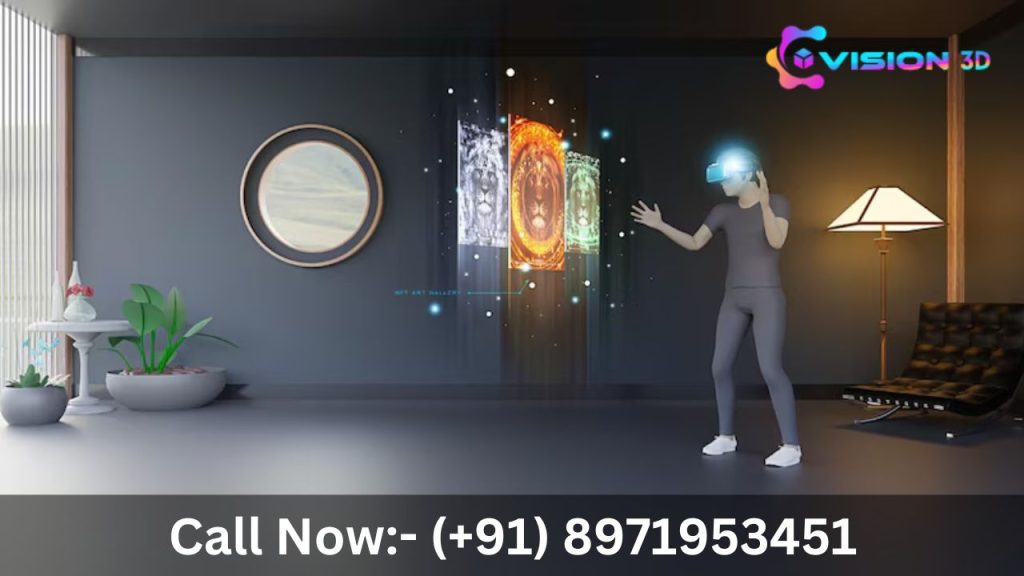3D hologram rooms stand out as one of the most captivating and futuristic three-dimensional technologies available today. These hologram rooms offer an unparalleled blend of art, science, and entertainment. This creates an environment where virtual objects seemingly come to life in three-dimensional space. Explore and choose the most appropriate holographic displays with one of the leading holographic display providers i.e., Vision3D. Let’s delve into the workings of these mesmerizing spaces and understand how they operate.
What is a 3D Hologram Room?
A room 3D model is also recognized as a holographic chamber or holographic display room. Especially designed spaces equipped with advanced projection systems and reflective surfaces are primary features. Within this chamber, viewers can witness holographic images suspended in mid-air appearing real instead or virtual to viewers.
How Does it Work?
The operation of a 3D hologram room involves several key components working in harmony to create the illusion of three-dimensional objects. Let’s break down the process step by step.
Projection Systems
3D hologram rooms consist of well-designed projection systems. It is capable of generating high-resolution images. These systems utilize lasers or LED projectors to emit light onto a series of mirrors or transparent screens strategically positioned within the room.
Reflective Surfaces
Within the chamber, there are carefully placed reflective surfaces such as transparent glass or acrylic panels. These surfaces serve to bounce the projected light beams, creating the illusion of depth and dimensionality.
Computational Algorithms
Advanced computational algorithms are employed to precisely calculate the angle and intensity of light required to produce holographic images. These algorithms take into account the position of the viewer relative to the holographic suit display, ensuring that the illusion remains consistent from various vantage points.
Motion Tracking Systems
To enhance the immersive experience, motion tracking systems may be integrated into the 3D hologram room. These systems use sensors to detect the movements of viewers within the space, allowing for interactive engagement with the holographic content.
Holographic Content Creation
Creating compelling holographic content is an essential aspect of the 3D hologram room experience. Artists and designers use specialized software to develop three-dimensional models and animations tailored to the unique characteristics of holographic display technology.
Real-Time Rendering
In many cases, holographic content is rendered in real-time, allowing for dynamic and interactive experiences. This real-time rendering capability enables viewers to interact with virtual objects or environments in ways that were previously unimaginable.
Optical Illusions
The combination of precisely directed light beams and reflective surfaces creates optical illusions that trick the human brain into perceiving three-dimensional objects. By controlling the angle and intensity of light, holographic images appear to float freely in space, captivating viewers with their lifelike presence.
Applications of 3D Hologram Rooms
Entertainment and Gaming
One of the primary applications of 3D hologram rooms is in the realm of entertainment and gaming. These immersive environments offer a next-level gaming experience where players can interact with virtual worlds and characters in a truly three-dimensional space.
Education and Training
In the field of education and training, 3D hologram rooms hold immense potential for immersive learning experiences. From interactive anatomy lessons to simulated laboratory experiments, holographic suit technology can revolutionize the way we teach and train future generations.
Product Visualization and Design
For product designers and marketers, 3D hologram rooms provide a powerful tool for visualizing and showcasing prototypes realistically. Whether presenting architectural models or showcasing consumer products, holographic displays can captivate audiences and drive engagement.
Telepresence and Communication
The ability to project lifelike holographic images opens up new possibilities for telepresence and communication. Imagine attending a meeting or conference in a virtual environment where participants appear as holographic avatars, making remote collaboration feel more natural and immersive.
Art and Creativity
Artists and creatives are exploring the potential of 3D hologram rooms as a medium for expression and storytelling. From interactive art installations to immersive theatrical experiences, holographic technology offers a canvas for pushing the boundaries of artistic expression.
The Future of 3D Hologram Rooms
As technology continues to advance, we can expect 3D hologram rooms to become even more sophisticated and widespread. Innovations in display technology, computational power, and content creation tools will unlock new possibilities for creating immersive and interactive experiences.
From entertainment venues to corporate boardrooms, 3D hologram rooms have the potential to transform the way we experience and interact with digital content. As these technologies continue to evolve, we can look forward to a future where the line between the virtual and the real becomes increasingly blurred, ushering in a new era of immersive storytelling and experiences.
Conclusion
So, 3D hologram rooms represent the pinnacle of immersive technology, blending art, science, and entertainment. With sophisticated projection systems and innovative content creation, these spaces offer limitless possibilities for gaming, education, design, communication, and artistic expression. As technology evolves, expect even more captivating experiences to emerge. To know more about holographic displays, call Vision3D customer care number – +91-8971953451.

